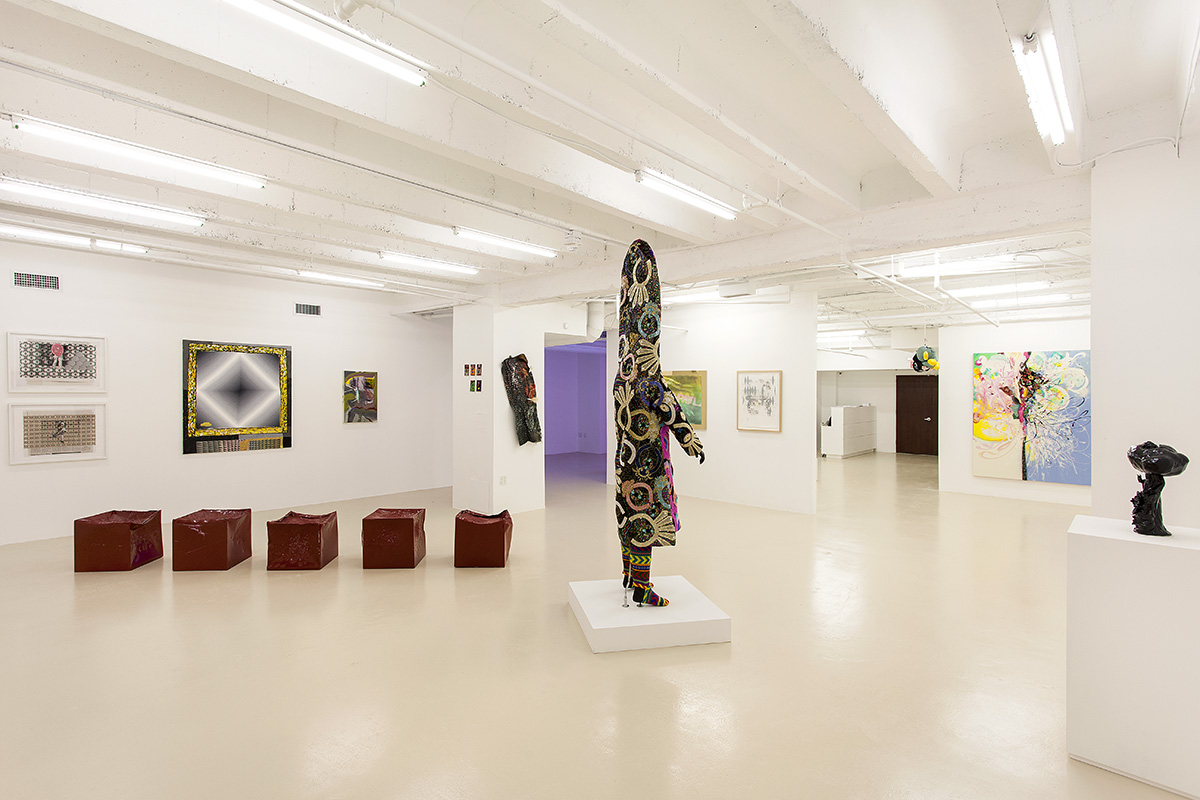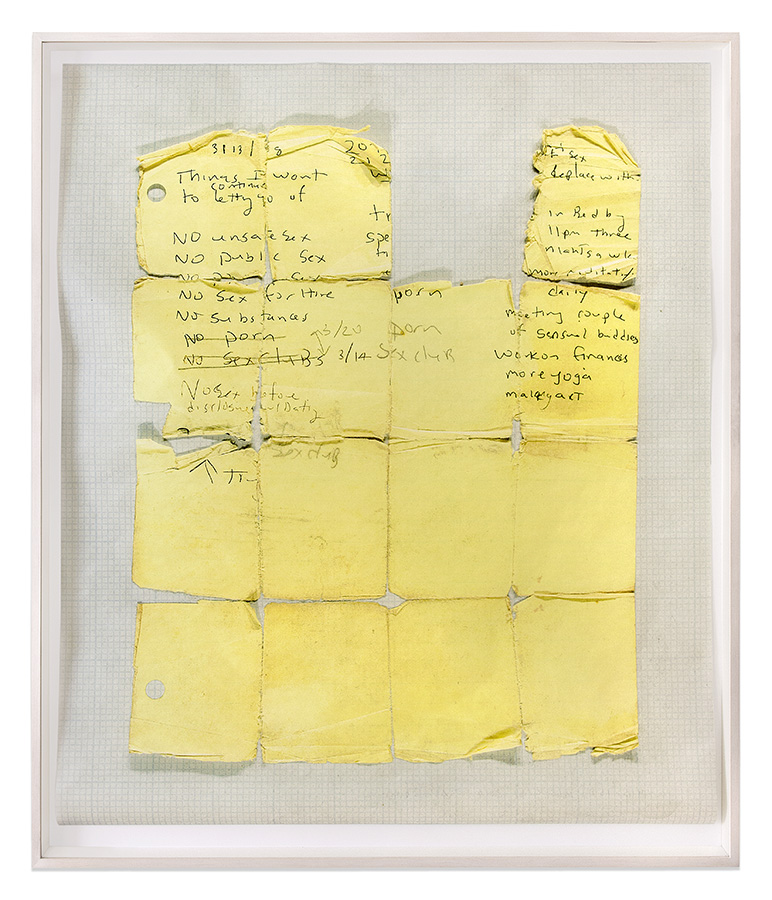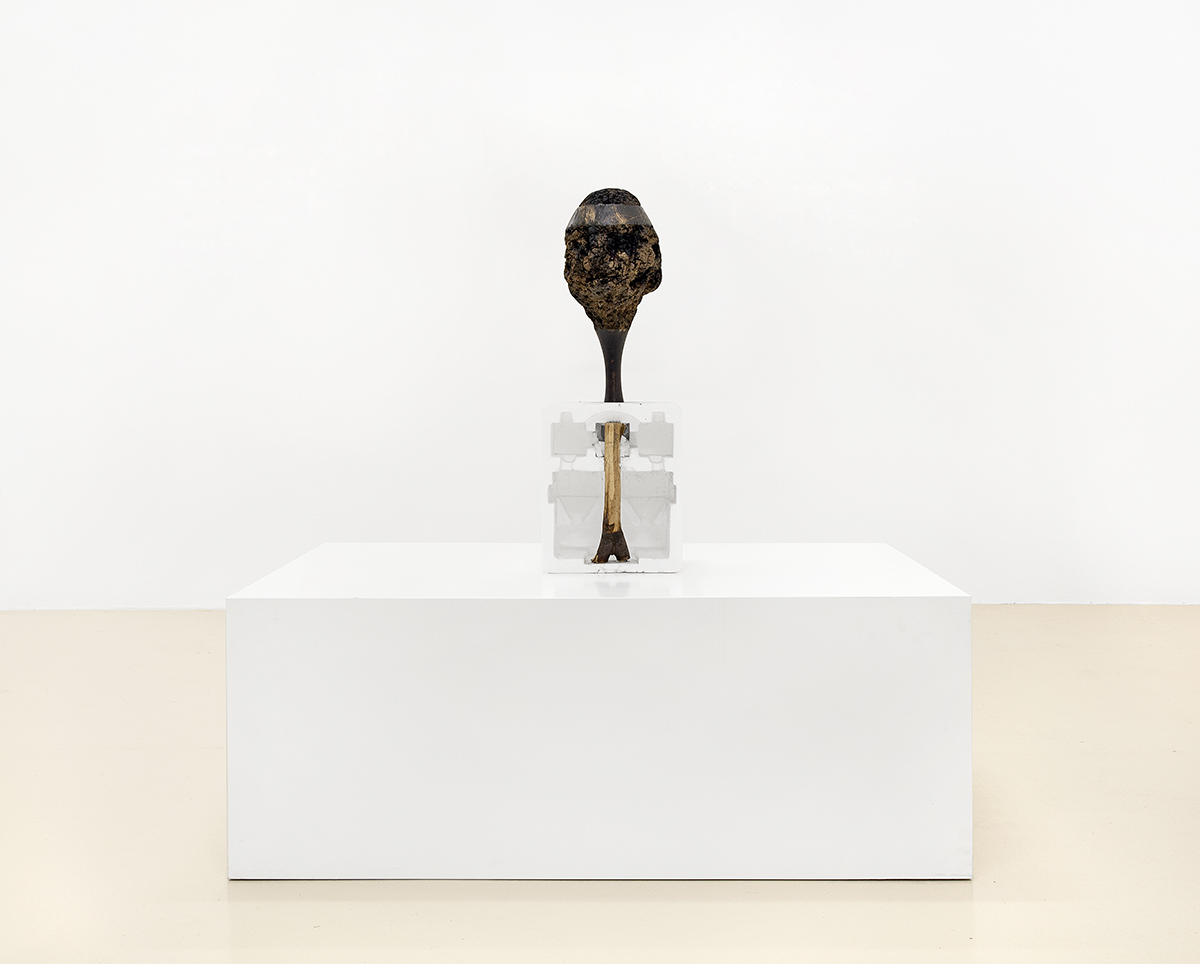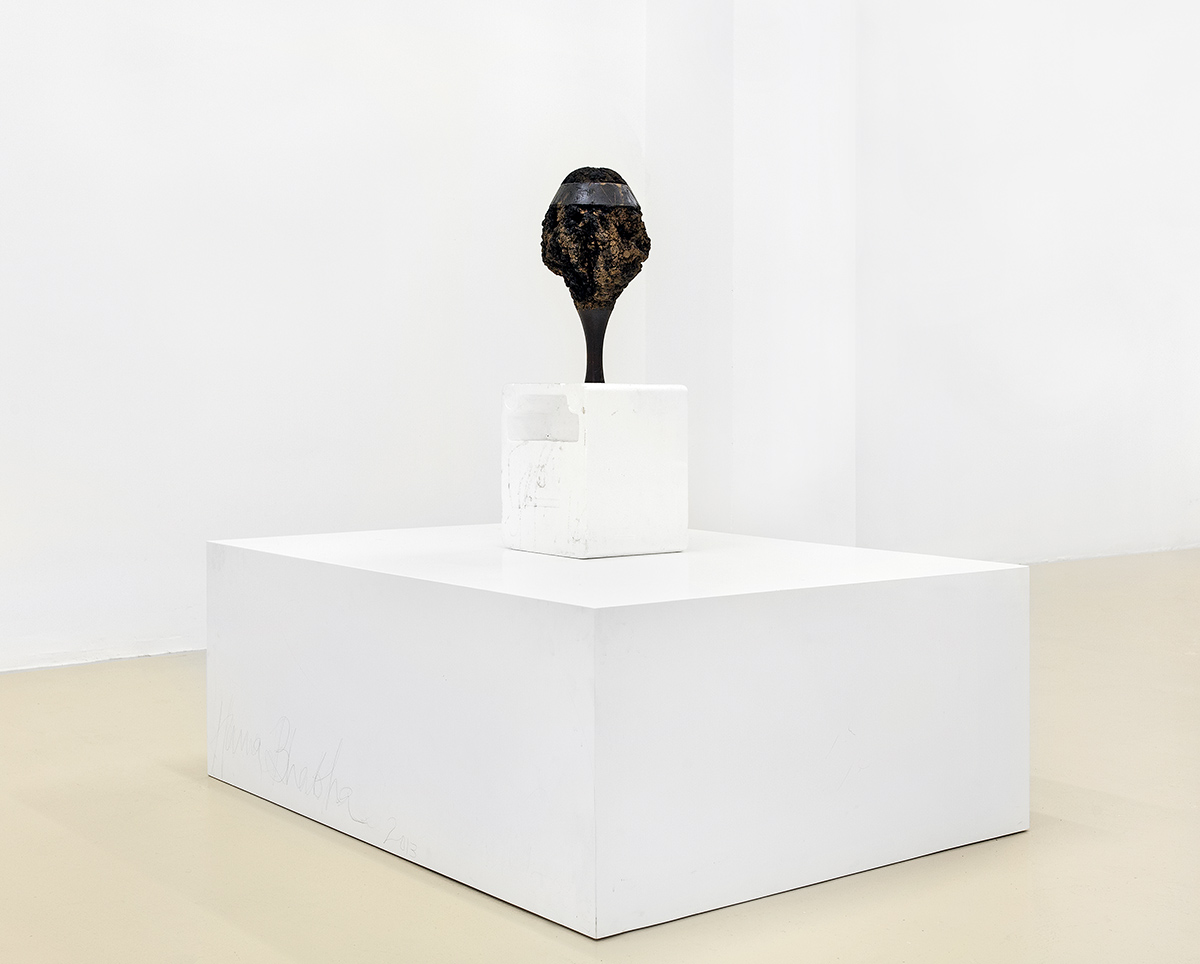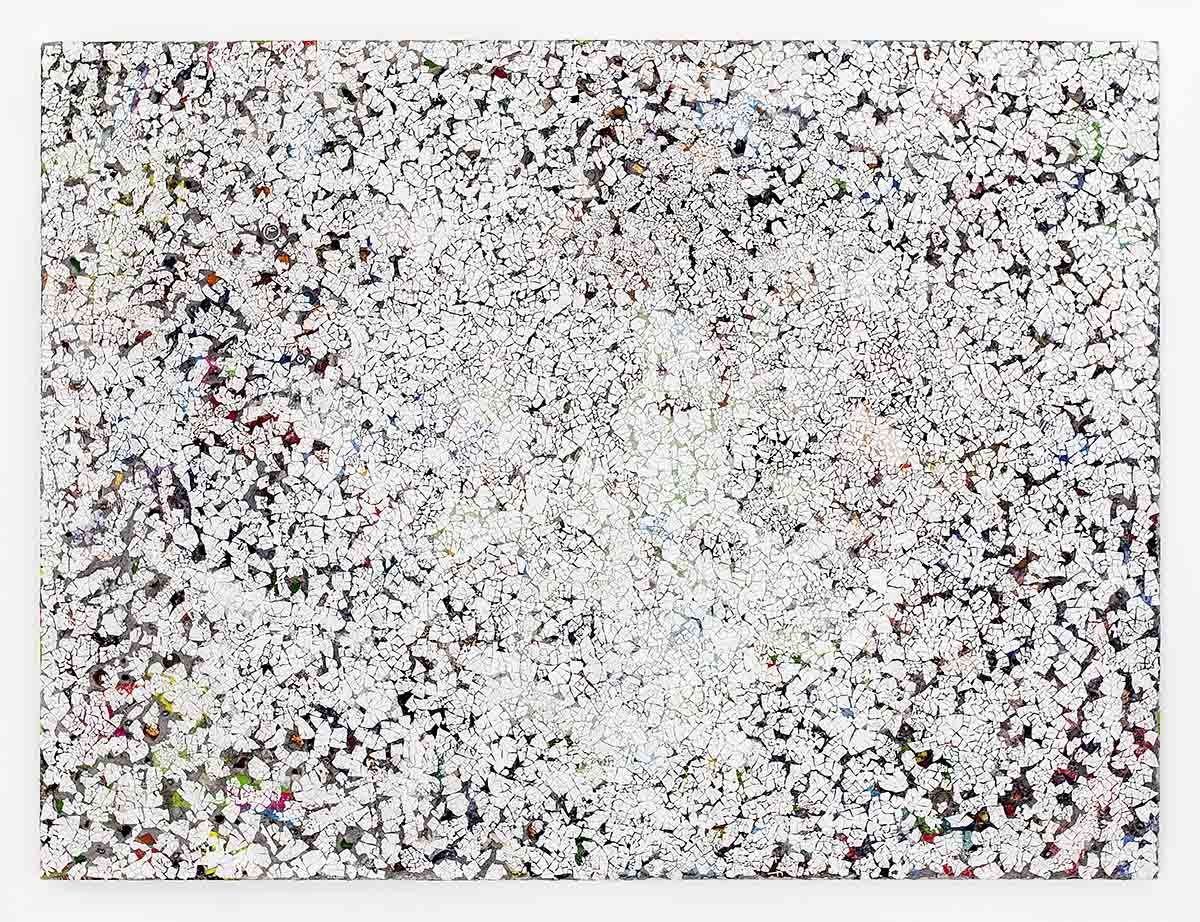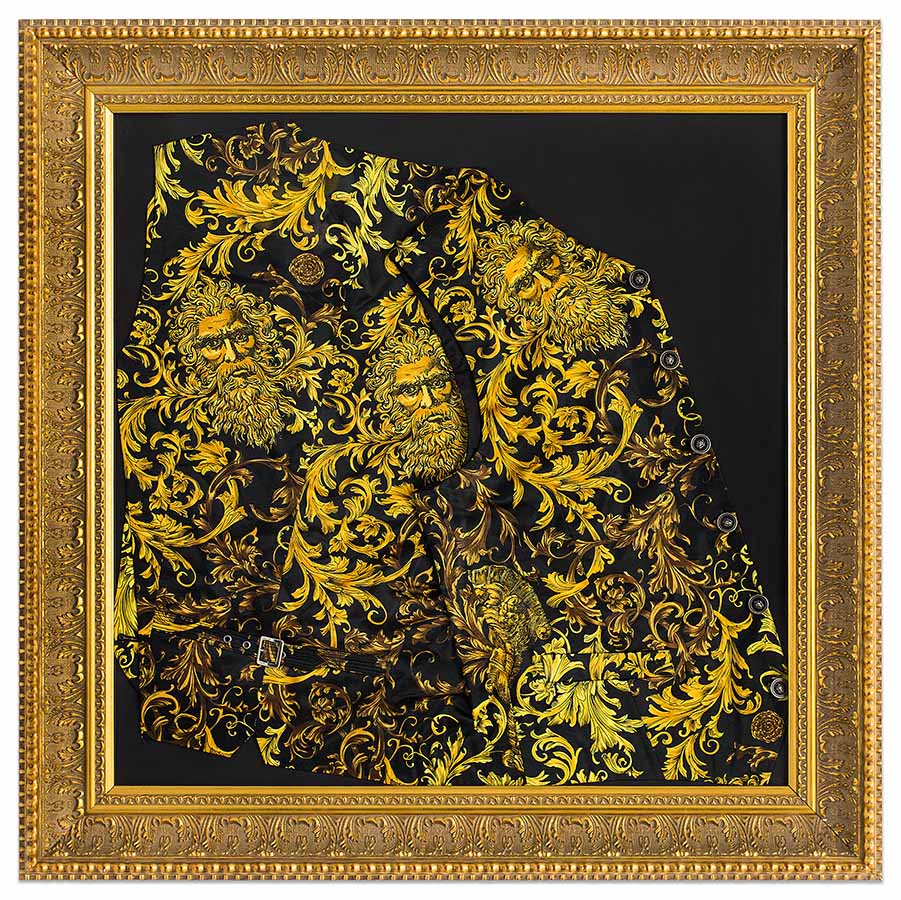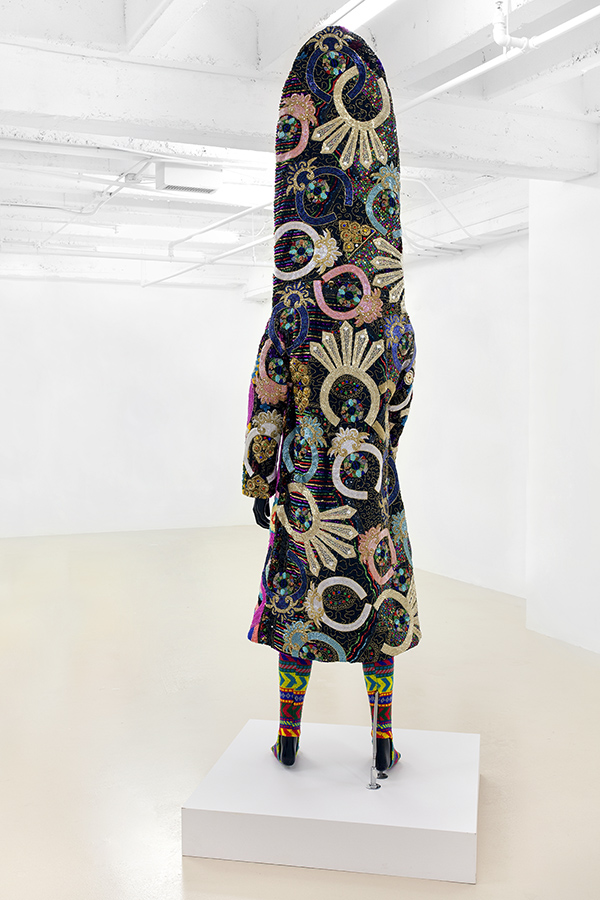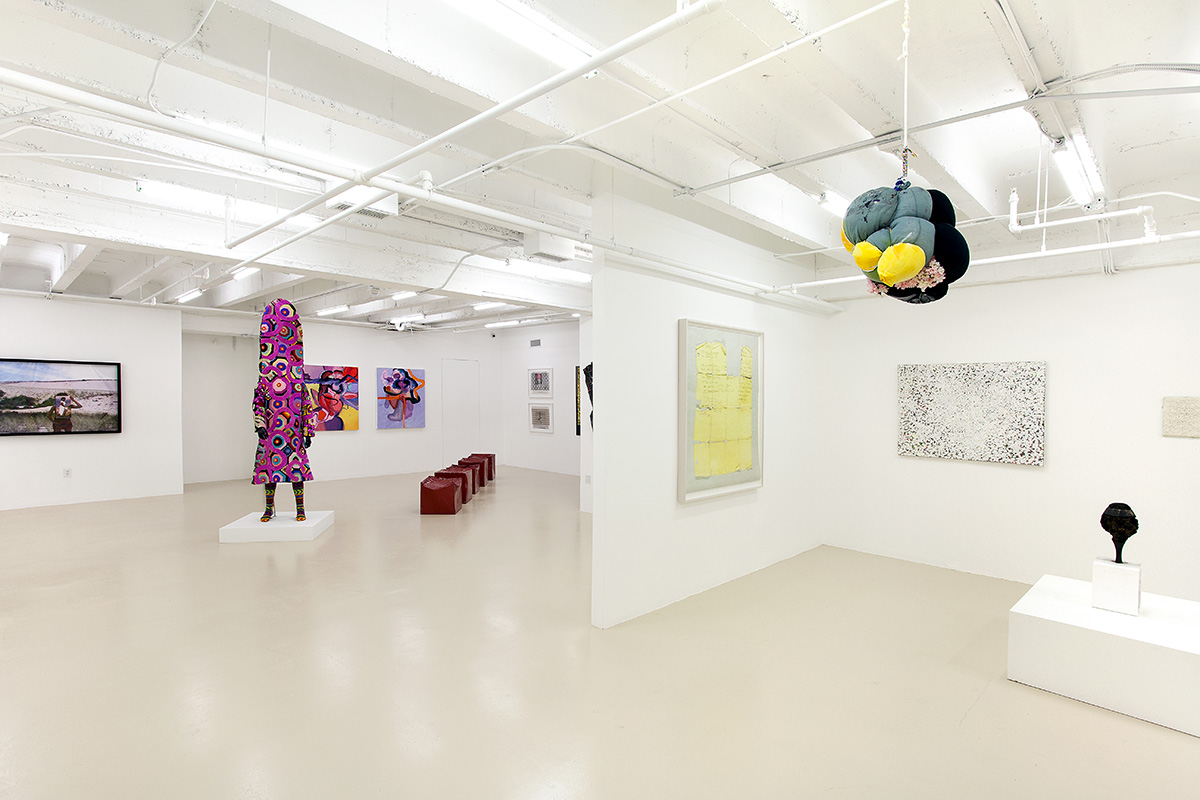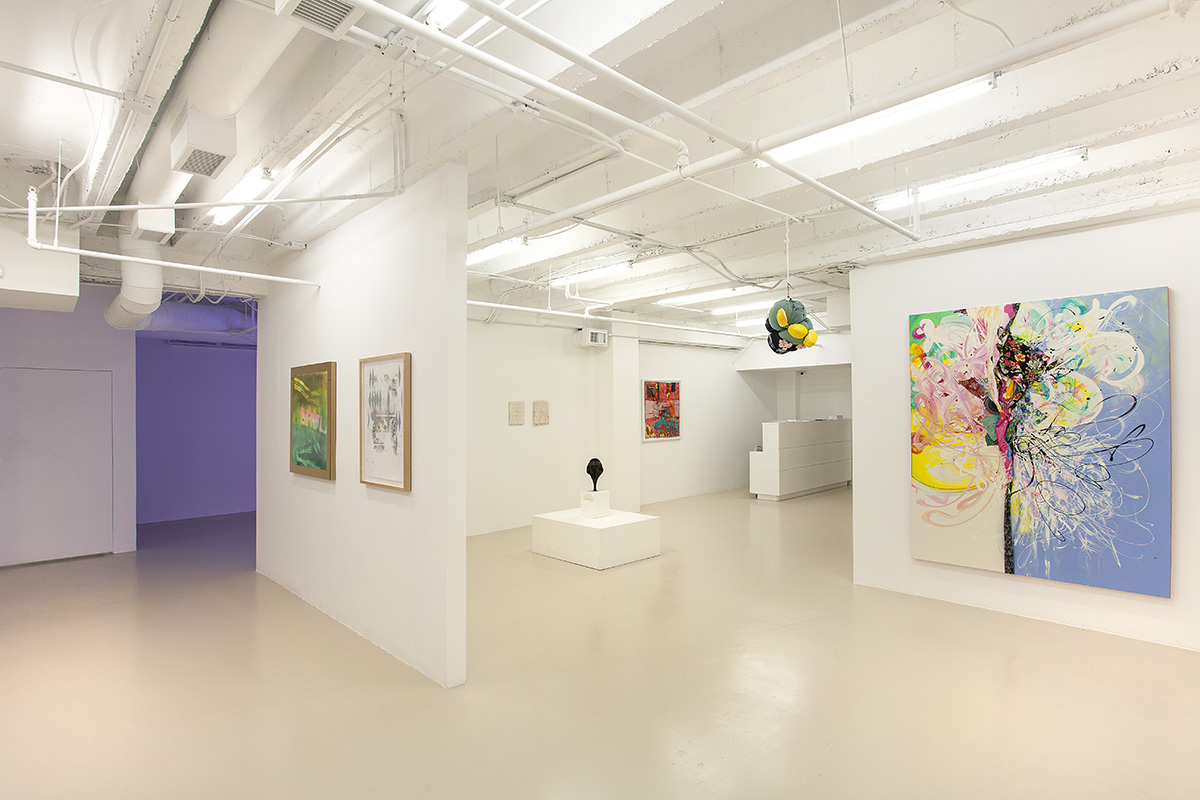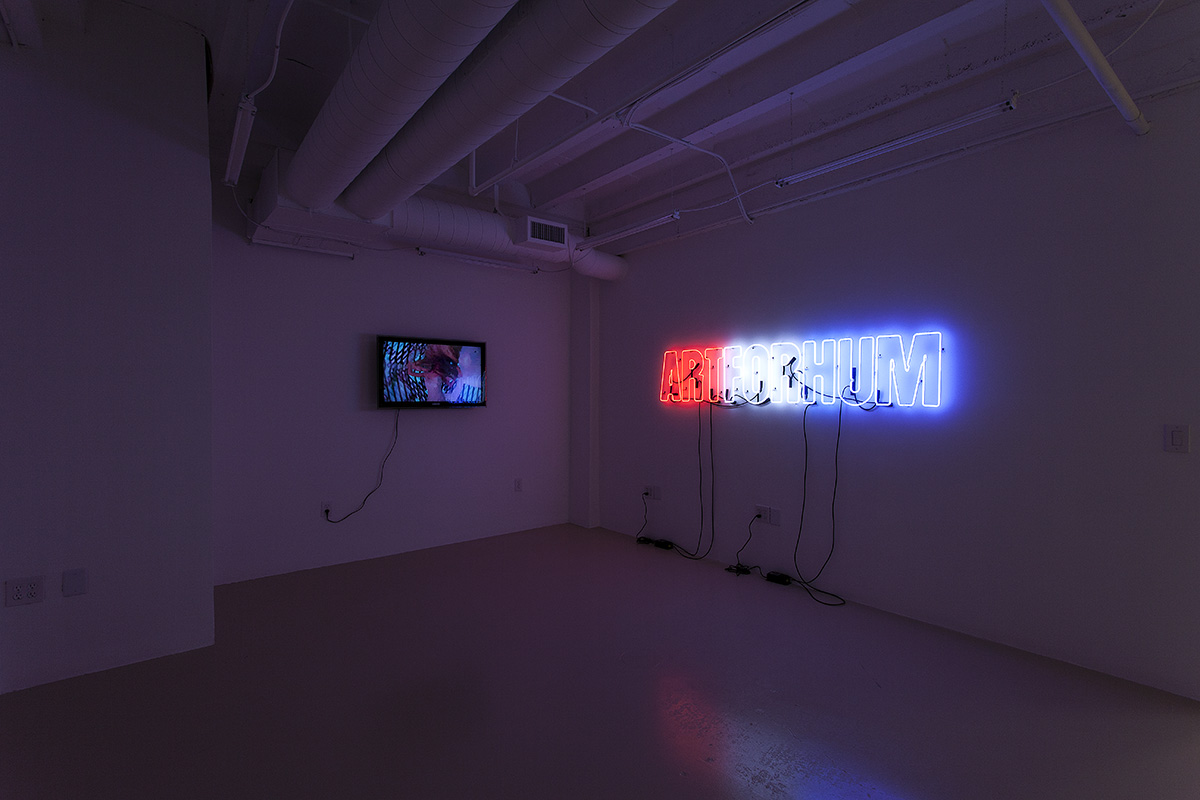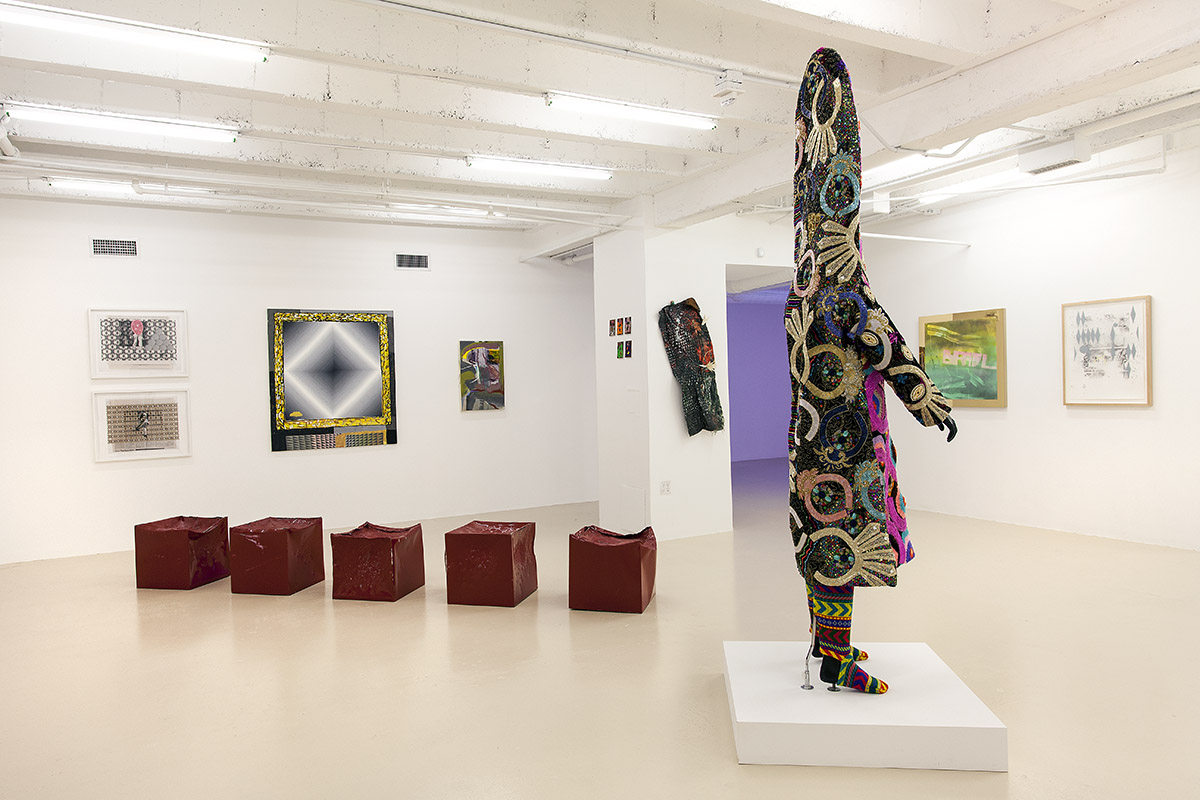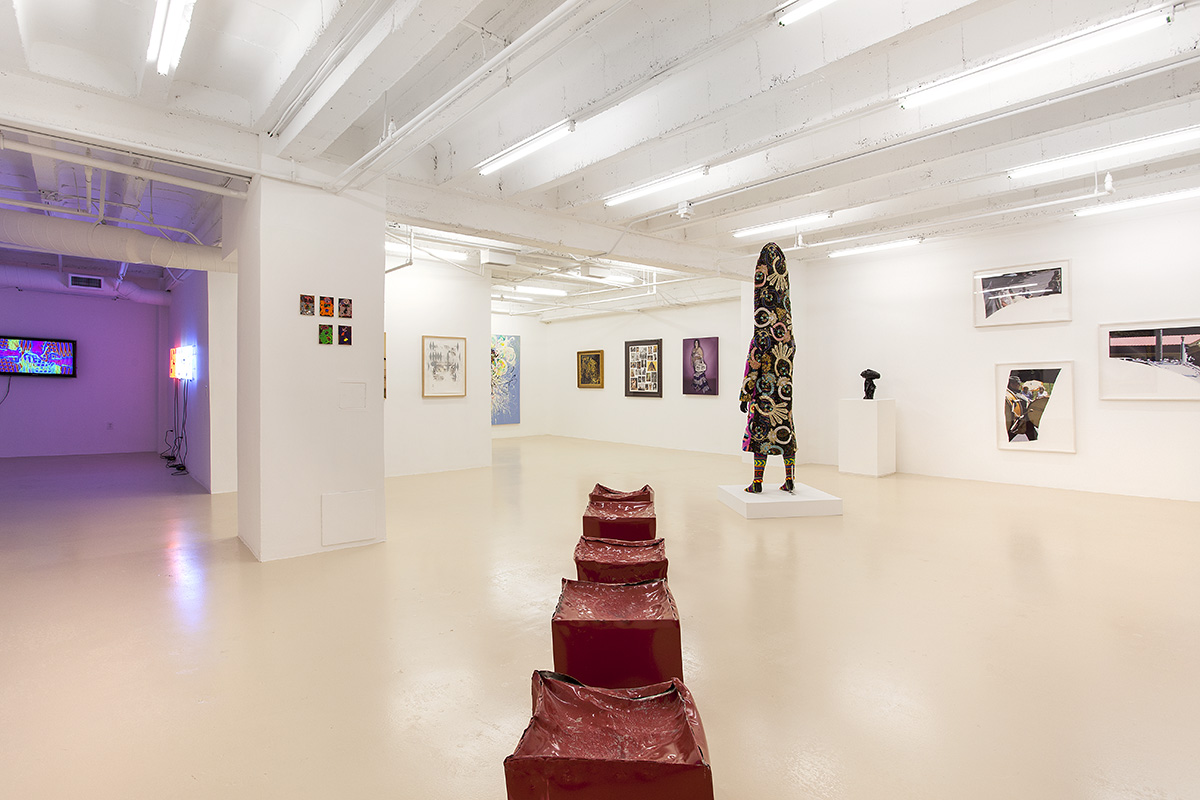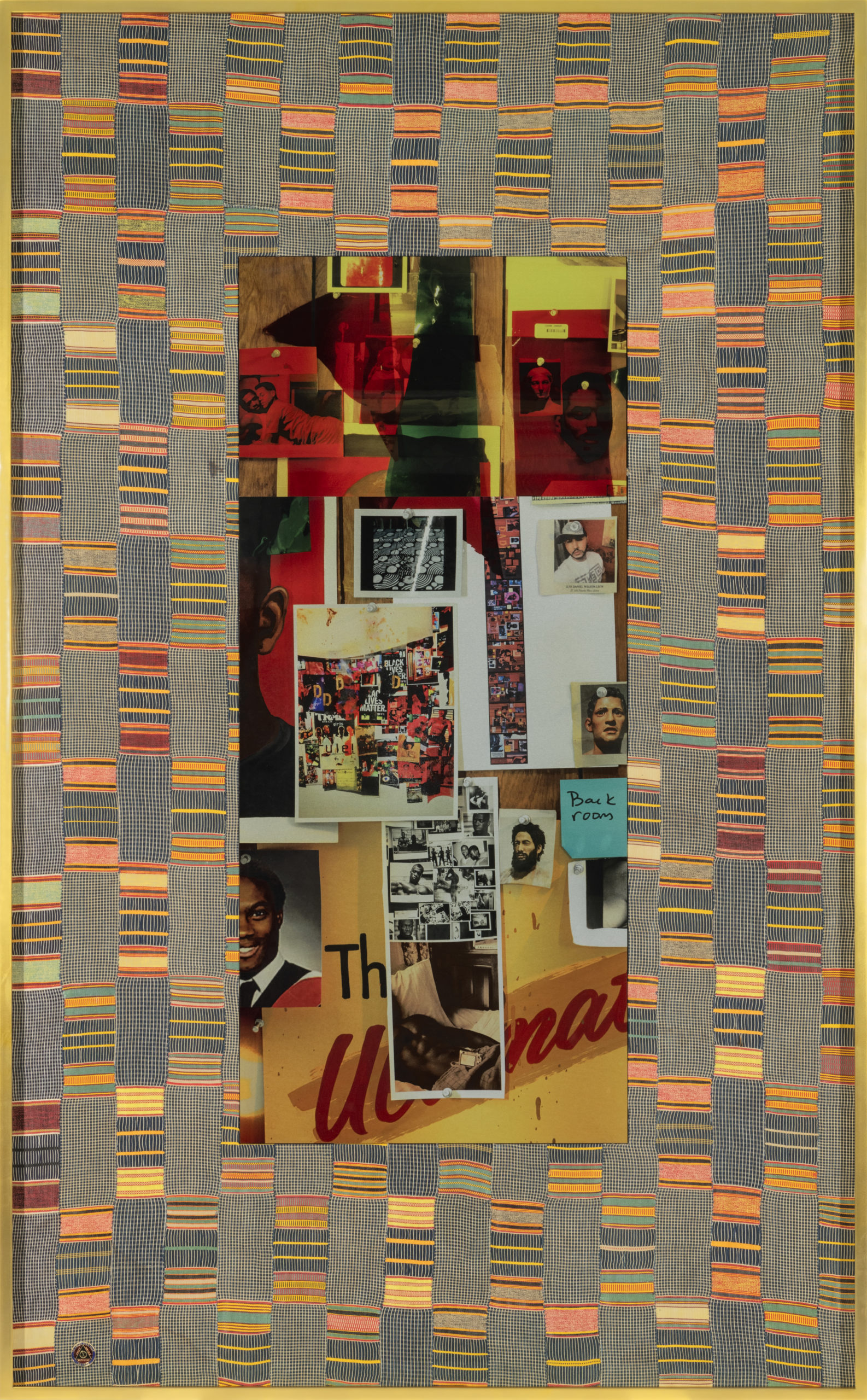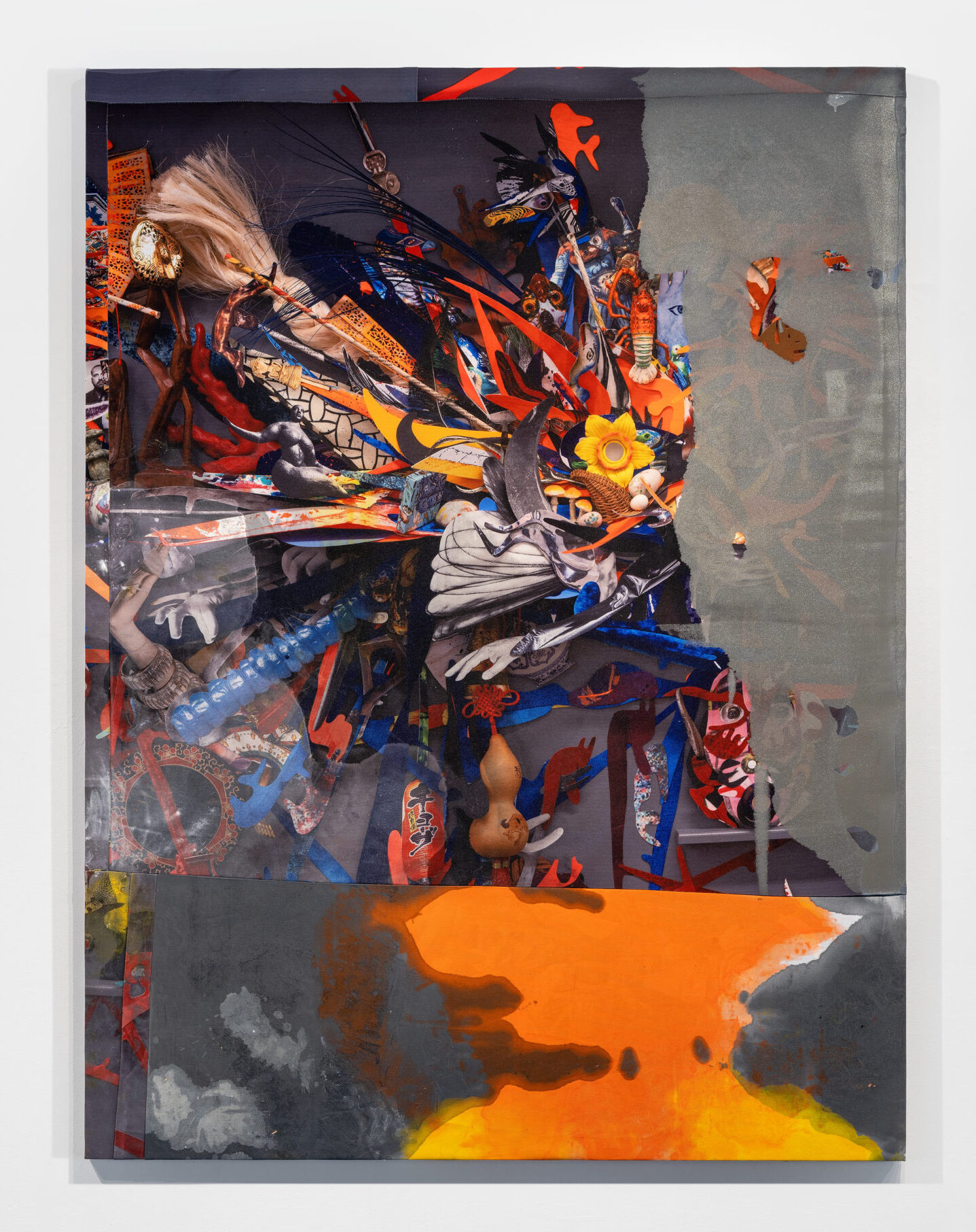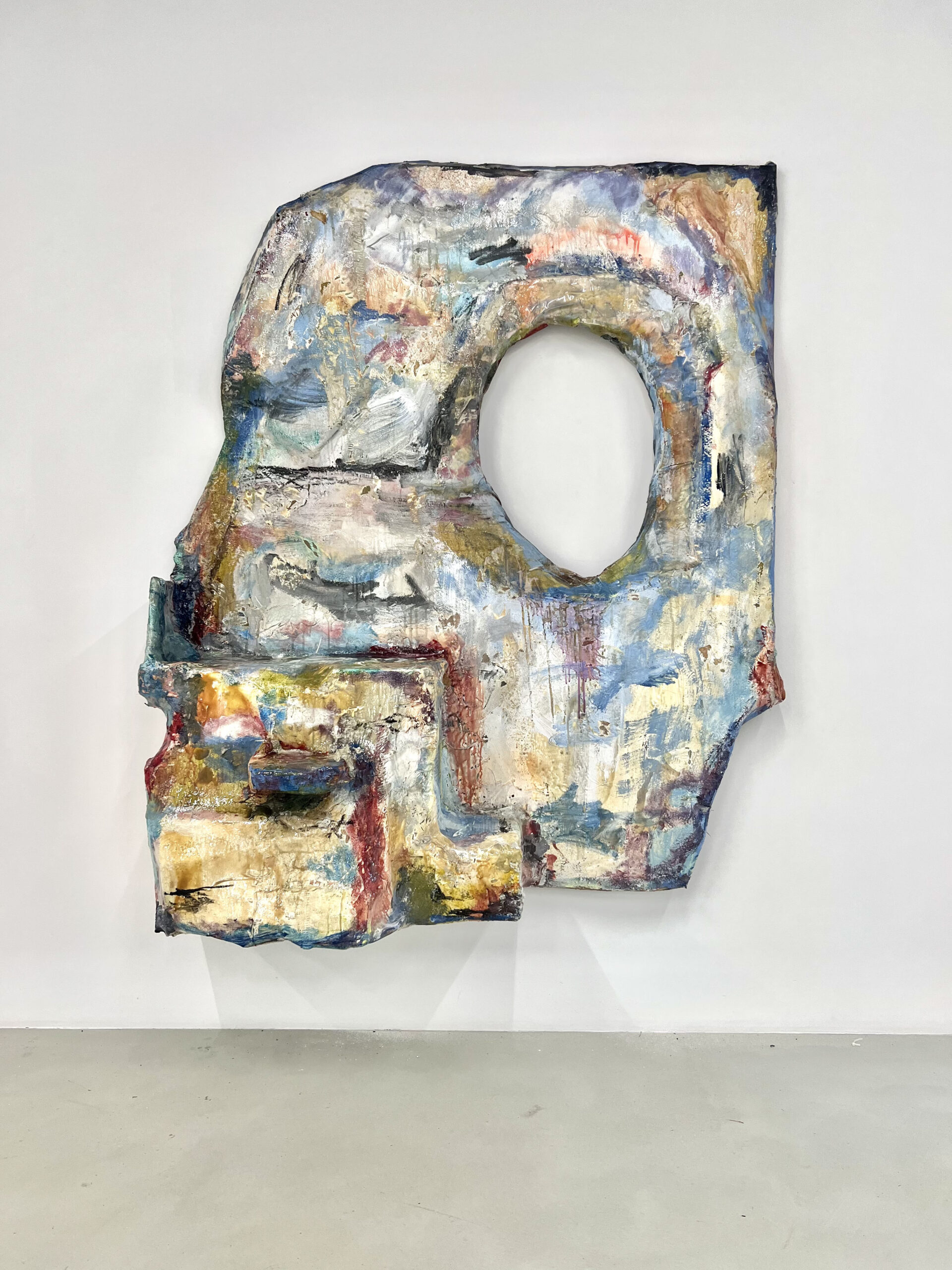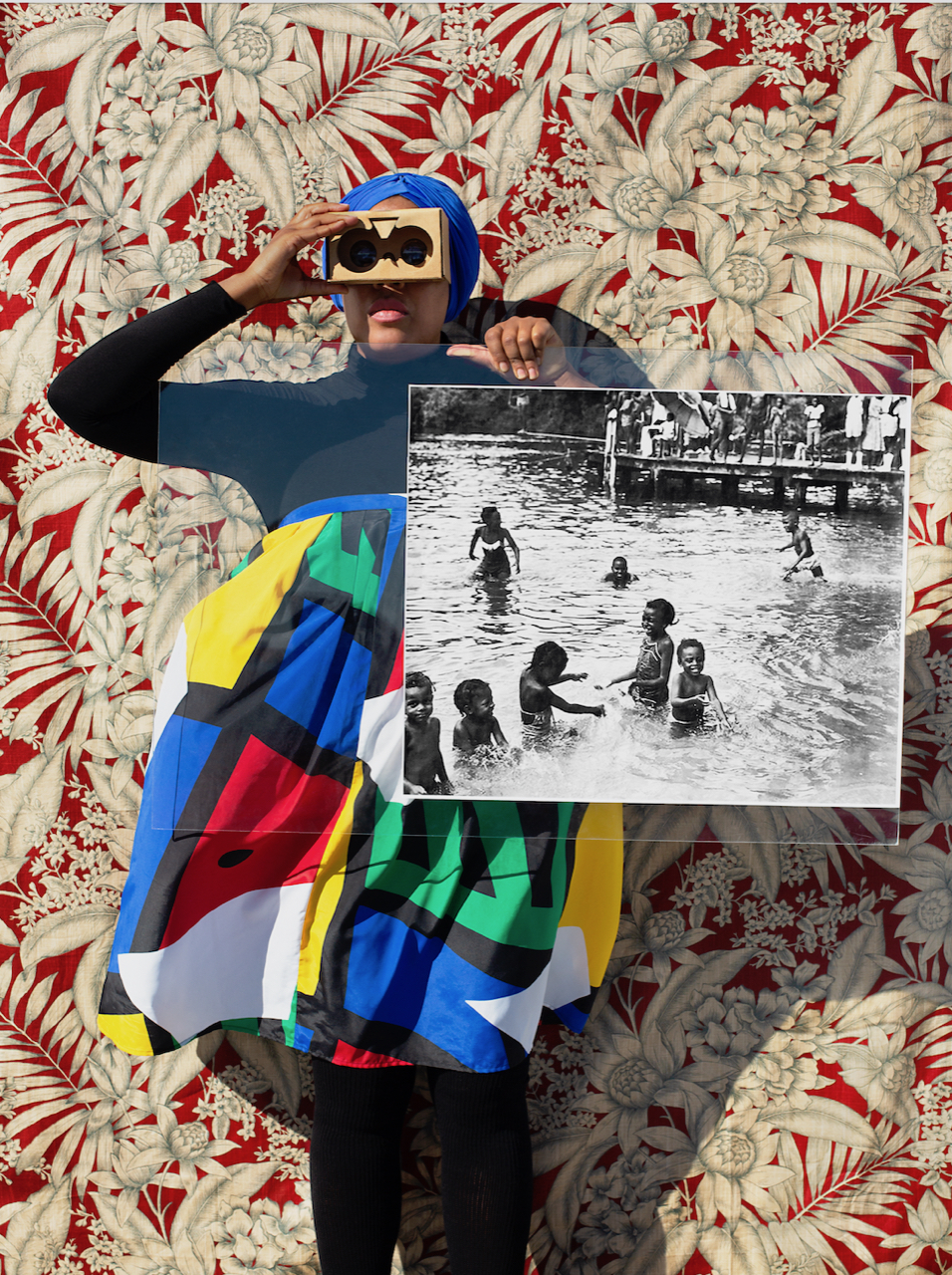Amerika
Group Show
David Castillo Gallery is proud to announce Amerika, with new work by represented, national, and international artists. Kafka’s unfinished first novel, published posthumously as Amerika, documents an imminent, alien journey toward the vast abstraction of landscape. Amerika, presents an intercorporeality of liminal territories identifying more with Shangri-La than turn-of-the-century power. The artists in Amerika coagulate around textile and conceptual sculpture, photography, painting, installation and performance to interrogate discursive practices that undertake the body that is formed- objectified- abstracted. Whether the body at stake constitutes a material engagement with Art History or an ecosophy of subjectivities, social relations, environments, symbolic codes, rhythms, and aesthetic patterns, Amerika presents a poetics of non-arrival- an insistence upon the performativity of plurality rather than its ontology.
The glow of red, white and blue from Rafael Ferrer’s Artforhum neon, rendered in the typeface of the magazine to which the wordplay refers, creates a new visual language around established culture. Such unincorporated territory is also occupied by Xaviera Simmons, who complicates the placidity of landscape with portraits utilizing a lexicon of iconic album covers. The result is personal– familiar and radical– a parade of reminders or refuted expectations in conversation with Christian Marclay’s triptych Untitled (from the series “Fourth of July”). The Fourth of July parade recorded in Marclay’s photographs presents an American landscape of bodies in motion or perpetual (re)translation. Jillian Mayer’s video is of the nude artist strolling down a beach, pursued and gradually covered by computer cursors. The familiar digital arrows point to becoming-subject and becoming-object, charged with Art Historical and pop cultural attitudes toward the female body.
The intricate textile sculptures of Sanford Biggers, Nick Cave, Pepe Mar, and Shinique Smith affect organismic dreamscapes and irrupt the habit of, as Maurizio Lazzarato writes, partitioning assemblages into subjects and objects. Biggers’ Haute Mess (2014) and Cave’s Soundsuit (2013) are critically necessary, for their chaotic relation between antique quilt fragments and spray paint– traditional patterns and the human figure– refusing the subject-object dichotomy. Smith’s suspended coagulations of color and texture and Mar’s phantasmagoric “shirts” — on the macro and micro scales, are in the space between materiality and anthropocentrism.
What once may have been regarded as Kafkaesque are now critical tenants of the Anthropocene, the epoch in which autonomous human identity is no longer privileged and the degree of human impact on the environment widely acknowledged. It is a time for photographic technology to reproduce infidel identities, as in the works of Luis Gispert, Francie Bishop Good and Robert Melee. It is time for the medium specificity of painting to destabilize the central figure, as in the work of Paul DeMuro, Eric N. Mack, Melvin Martinez, Bjarne Melgaard, Fabian Pena, Philipp Schwalb, Wendy White, and David Wojnarowicz. Amerika imagines a journey toward the Anthropocene, from the sculptures of Huma Bhabha to the performances of Kate Gilmore, Susan Lee-Chun and the TM Sisters or the collages of Adler Guerrier, Lyle Ashton Harris, and Quisqueya Henriquez.
Bourdieu describes the body as a vector, or reciprocity of body-world. True to its fountainhead, Amerika is a narrative of becoming in which identity and abstraction modify one another. As the inaugural exhibition at David Castillo Gallery’s Miami Beach location, Amerika serves as a reminder that the discovery of each new territory is a process of relation.
Huma Bhabha
Nick Cave
Paul DeMuro
Rafael Ferrer
Luis Gispert
Francie Bishop Good
Susan Lee-Chun
Eric N. Mack
Christian Marclay
Melvin Martinez
Robert Melee
Bjarne Melgaard
Fabian Pena
Philipp Schwalb
TM Sisters
Wendy White
David Wojnarowicz
